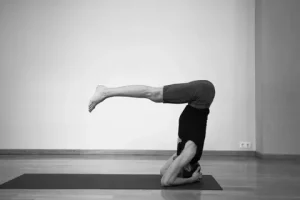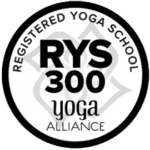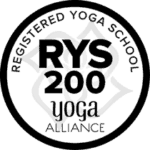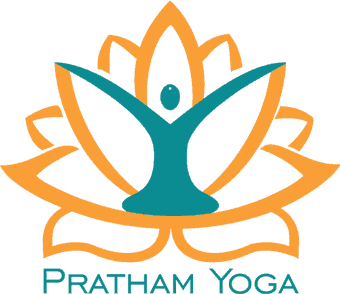Urdhva Dandasana Unveiled: Tips for Mastery
Urdhva Dandasana, often known as the Upward Staff Pose, is a challenging yet invigorating yoga posture that can elevate your practice to new heights. This advanced asana is not just a test of strength and balance but also a profound journey into enhancing your body’s alignment and flexibility. Whether you’re a seasoned yogi looking to refine your skills or a curious beginner eager to explore the depths of yoga, understanding the intricacies of Urdhva Dandasana can be a game changer. In this article, we will unveil the secrets to mastering this dynamic pose, offering practical tips and insights that will help you achieve stability, enhance your core strength, and open up a world of physical and mental benefits. So, roll out your yoga mat, and let’s dive into the transformative world of Urdhva Dandasana.

Urdhva Dandasana: A Historical Perspective
Urdhva Dandasana, also recognized as the Upward Staff Pose, holds a special place in the rich tapestry of yoga’s history. Rooted in the ancient tradition of Hatha Yoga, this pose is a testament to the practice’s enduring quest for spiritual and physical mastery. The name itself, derived from Sanskrit—’Urdhva’ meaning ‘upward’, ‘Danda’ meaning ‘staff’, and ‘Asana’ meaning ‘pose’—illustrates the pose’s symbolic representation of strength, stability, and the upright human spirit. Historically, Urdhva Dandasana has been used to cultivate inner fire, enhance concentration, and prepare the mind and body for deeper meditative practices. As we practice this pose, we connect with centuries of yogis who have also embarked on this path of self-discovery and discipline.
Mastering Urdhva Dandasana: A Detailed Step-by-Step Guide
Preparation
Begin seated on your yoga mat with your legs extended straight in front of you. Sit tall, elongating your spine, with your palms placed on the mat behind your hips. Take a few deep breaths here to center your focus and calm your mind.
Entering the Pose
From the seated position, lean back slightly and place your hands firmly beside your hips, fingers pointing forward. Engage your core and prepare to lift off the ground.
Lift Into Handstand
With a powerful push from your palms and core, lift your hips off the mat. Use a swift motion to kick your legs up into a handstand. It’s important to engage your shoulder muscles and keep your arms straight for support. If you’re new to handstands, practicing against a wall is a good safety measure.
Stabilize Your Body
Once in the handstand, focus on achieving a stable position. Your shoulders should stack directly over your wrists, and your core should remain tight. This stabilization is crucial for maintaining balance and forming the straight line required for Urdhva Dandasana.
Straighten the Legs
Gradually, begin to straighten your legs upwards. It’s essential to do this slowly to maintain balance. Your feet should be pointed, and your legs should come together, mimicking the form of an upward staff or rod.
Hold the Pose
Aim to hold Urdhva Dandasana for 3 to 5 breaths. In this position, every part of your body should be activated—from your pointed toes to your engaged core and out through your shoulders and fingertips.
Exiting the Pose
To exit, start by softening your knees slightly to break the straight line. Carefully lower your legs in a controlled manner, coming back into a seated position as you start.
Counterpose
After completing Urdhva Dandasana, it’s helpful to perform a counterpose. Child’s Pose (Balasana) is excellent for this. Sit back on your heels, extend your arms forward, and rest your forehead on the mat. This pose will help in relaxing your body and stabilizing your circulation after the invigorating handstand.
Reflect
Take a moment in Child’s Pose to reflect on the practice. Notice any sensations in your body, acknowledge your efforts, and observe the calming effects on your mind.
The Benefits of Urdhva Dandasana
Enhances Core Strength
Urdhva Dandasana is an excellent pose for strengthening the muscles of the core. Engaging the abdominal muscles during this pose not only supports the spine but also improves your overall stability and posture in daily activities.
Improves Balance and Stability
Regular practice of this pose helps in developing a better sense of balance by focusing on alignment and body awareness. This can be especially beneficial for sports and other physical activities that require good coordination.
Increases Spinal Flexibility
As you stretch upwards in Urdhva Dandasana, your spine is encouraged to extend, promoting flexibility and helping to relieve tension along the vertebral column. This can be a soothing counteraction to the effects of prolonged sitting or standing.
Stimulates Organ Function
The upward stretch in this pose helps in massaging the internal organs, thereby improving the efficiency of the digestive system and boosting overall organ function.
Boosts Mental Focus
Balancing in Urdhva Dandasana requires concentration and mental engagement, which can enhance cognitive functions such as focus and clarity, making it a great exercise for the mind as well as the body.
Explore the 200 Hour Yoga Teacher Training in Rishikesh
Embark on a transformative journey with the 200 hour yoga teacher training Rishikesh. Nestled in the tranquil Himalayas, this intensive program offers a deep dive into the profound practice of yoga. As you explore the 200 hrs yoga teacher training in Rishikesh, you will be guided by experienced instructors who will help you enhance your understanding of yoga philosophy, anatomy, asana, and teaching methodologies. This 200 hour yoga TTC in Rishikesh is not just about mastering asanas; it’s about fostering spiritual growth and preparing you to confidently lead your own classes. Whether you aim to become a teacher or wish to deepen your practice, this course is a gateway to discovering your true potential.
Advance Your Practice: 300 Hour Yoga Teacher Training in Rishikesh
Take your yoga skills to the next level with a 300 hour yoga teacher training in Rishikesh. This in-depth course at Pratham Yoga is perfect for those looking to deepen their understanding and enhance their ability to teach yoga. The 300 hour yoga TTC in Rishikesh covers more than just yoga poses; it includes advanced teaching techniques and deep insights into yoga philosophy. Set in the peaceful environment of the Himalayas, this training not only improves your yoga practice but also supports your personal growth. If you’re ready to expand your teaching skills or connect more deeply with your yoga practice, this training provides the ideal opportunity.
Exploration of Urdhva Dandasana, remember that mastery of this pose, like any aspect of yoga, comes with patience and consistent practice. At Pratham Yoga, we believe in nurturing each student’s journey towards achieving their personal best in yoga. Incorporating Urdhva Dandasana into your routine not only strengthens and revitalizes your body but also brings mental clarity and focus. We encourage you to embrace the challenges and rewards this pose offers. Keep practicing, stay inspired, and let the principles of alignment and balance guide you in your yoga practice. For more insights and guidance, join us at Pratham Yoga, where your yoga journey is cherished and supported.


